What’s Up?
I am currently leading a BIRDS AS ART Instructional Photo-Cruise in the Galapagos archipelago. Basically, I will not have internet access until late in the day on July 29 so please refrain from e-mailing me at the traditional samandmayasgrandpa@att.net address until very late July. For mail order or other help please contact Jim by phone M-F at 863-692-0906 or via e-mail at the staffbaa address. To register for an IPT please contact Jennifer by phone during weekday banker’s hours at 863-692-0906 or via e-mail to our Verizon address with ATTN: JEN in the subject line. AS a side note, my right hand man Jim Litzenberg can help you with just about anything BIRDSASART.
Please Help Support My Work on the BAA Blog
Thanks a Stack! June was a Great Month.
The last few weeks have been quite rewarding. Thanks a stack to the many who used our B&H links for purchases large and small. Right now I am working closely with my B&H rep to have four 400 DO and two 100-400 II BAA Affiliate orders expedited. It has been nearly impossible to come by a 400 DO II. I am hoping that my efforts pay dividends fairly soon…. 100-400IIs are now in stock at B&H. The 400 DO II lenses continue to be in very short supply. The sooner you order, the sooner you will get yours; I am working closely with my contact at B&H to have the current orders expedited when a shipment does actually arrive.
To show your appreciation for my efforts here, we ask, as always, that you use our the B&H and Amazon affiliate links on the right side of the blog for all of your purchases. B&H Is recommended for you major photography gear purchases, Amazon for your household, entertainment, and general purpose stuff. Please check the availability of all photographic accessories in the BIRDS AS ART Online Store, especially Gitzo tripods, Wimberley tripod heads, and the like. We sell only what I have used, have tested, and can depend on. We will not sell you junk. We know what you need to make creating great images easy and fun. And we are always glad to answer your gear questions via e-mail.
I would of course appreciate your using our B&H affiliate links for all of your major gear, video, and electronic purchases. For the photographic stuff mentioned in the paragraph above we, meaning BAA, would of course greatly appreciate your business. Here is a huge thank you to the many who have been using our links on a regular basis and visiting the BAA Online store as well.
Selling Your Used Photo Gear Through BIRDS AS ART
Selling your used (or like-new) photo gear through the BAA Blog or via a BAA Online Bulletin is a great idea. We charge only a 5% commission. One of the more popular used gear for sale sites charges a minimum of 20%. Plus assorted fees! Yikes. The minimum item price here is $500 (or less for a $25 fee). If you are interested please e-mail with the words Items for Sale Info Request cut and pasted into the Subject line :). Stuff that is priced fairly–I offer free pricing advice, usually sells in no time flat. In the past few weeks we have sold nearly everything in sight. Do know that prices on some items like the EOS-1D Mark IV, the old Canon 500mm, the EOS-7D, and the original 400mm IS DO lens have been dropping steadily. You can see the complete listings here.
|
This image was created last August at Jamaica Bay Wildlife Refuge in Queens, NY with the tripod-mounted Canon EF 600mm f/4L IS II USM lens, the Canon Extender EF 2X III, and the Canon EOS-1D X. ISO 1000. Evaluative metering +1 1/3 stops: 1/200 sec. at f/8. AWB. Center AF point/AI Servo Expand (by necessity)/Rear Focus AF as originally framed was active at the moment of exposure. Being restricted to the center AF point (plus the four expanded points) can present challenges; here the AF point was on the side of the bird’s breast. With the bird angled slightly toward us that resulted in a sharp eye. I executed the typical central sensor crop for a small in the frame subject looking left by taking some off the right and the off bottom. Click here to see the latest version of the Rear Focus Tutorial. Click on the image to see a larger version. What is it? |
Image Questions
Was I seated behind my tripod or lying on the ground with the legs splayed? How did you know? How could the image have been improved?
Shorebird Lessons
North American shorebirds are relatively small birds in one of several families including the sandpipers, oystercatchers, avocets and stilts, and plovers. The sandpiper family includes the small sandpipers collectively known as the “peeps,” phalaropes, godwits, yellowlegs, curlews, snipe, woodcock, and dowitchers. Many of them love running around in the mud or wet sand looking for food. Others prefer grassier habitats. Some love open beaches. Most feed on small invertebrates, small mollusks and snails, and a variety or usually aquatic insects and worms. Some like Ruddy Turnstone may resort to scavenging. I have seen them feeding on French fries at Daytona Beach and picking away at large dead fish.
When I began birding in 1976 they quickly became my favorite bird family. Do understand that many birds of the shore like gulls, terns, skimmers, ducks, pelicans, and others are not correctly noted as being shorebirds.
It is often easier to age a shorebird, that is, to tell if it is a juvenile bird or an adult, than it is to identify it as to species. The bird in today’s featured photograph is a juvenile Semipalmated Sandpiper. Adults in August have splotchy feather patterns that give the birds a worn, uneven look. Juveniles like this bird have a nice edging or fringe on each feather giving the bird a neatly patterned look. Semipalmated Sandpiper is one of the five regularly occurring North American peeps. It has black or very dark greenish legs and a fairly straight, fairly stout medium length bill (on average) with somewhat of a blob at the tip. The wings and tail are approximately the same length. Keep these tips in mind as you try to identify some of the additional shorebird species that I will be posting.
Todays’ Question
Is the bird in the image above an adult or a juvenile? How do you know? Can you identify it as to species? Why did you answer as you did? Read the paragraph above carefully for clues that will help with answering these two questions.
|
This image was created last August at Jamaica Bay Wildlife Refuge in Queens, NY with the tripod-mounted Canon EF 600mm f/4L IS II USM lens, the Canon Extender EF 2X III, and the Canon EOS-1D X. ISO 1000. Evaluative metering +1 stop: 1/320 sec. at f/9. AWB. Center AF point/AI Servo Expand (by necessity)/Rear Focus AF as framed was active at the moment of exposure. Being restricted to the center AF point (ply the four expanded points) can present challenges; here the AF point was on a spot just this side of the bird’s eye… Thus, the eye in the original is a bit softer than I would have liked. Click here to see the latest version of the Rear Focus Tutorial. Click on the image to see a larger version. Semipalmated Sandpiper in fresh juvenal plumage |
What Bugged Me?
The image immediately above appeared in the first “Shorebird Lessons” blog post here, I wrote: While I love almost everything about this image, there are two things that bug me. They are closely related…. If you think that you know what they are, please do leave a comment.
The Answer
While I love the overall look and mood of the image, I wish that the bird’s head had been turned ever-so-slightly towards me; this would likely have resulted in a small but visible catch-light…. Thanks to the many who commented.
Shorebirds, Beautiful Beachcombers
This, my first book, is perfect for anyone who wishes to learn about shorebirds (without being overwhelmed by the difficult identification problems). In addition to sharing lots of simple ID tips I cover the basics of shorebird biology and ecology including migration, breeding, and feeding habits. The book is illustrated with 70 of my images and 26 more by some of the world’s best nature photographers. We only have a very few boxes of this classic left; when they are gone it will be used copies only on Amazon or eBay only. Click here to order your copy. In most of North American southbound shorebird migration begins in earnest in a very few days with failed nesters leaving their arctic and sub-arctic nesting grounds and heading south. In July they these birds will always be worn, molting adults.
|
The strange thing is that when I lived in New York, I never knew about this amazing and consistently productive location. |
Nickerson Beach/JBWR (possibly…)/Black Skimmer/Oystercatcher/migrant shorebird IPT: August 13-16, 2015. 3 1/2 DAYS: $1399.
Meet and greet on the evening of WED August 12. Limit 10/Openings 3.
Most of our seven photo sessions will be spent at Nickerson beach photographing the nesting Black Skimmers. In flight, sometimes battling. Carrying fish. Chicks of varying sizes from a very few just-hatched to lots of fledglings. It is likely that we will get to see some Great Black-backed Gulls preying on the juvenile skimmers. They swallow them whole. There will be lots of gulls to photograph as well as some Common Terns. Locally breeding shorebird species include American Oystercatcher–pretty much guaranteed, Willet, which is likely, and Piping Plover, which is probable but we need to get lucky with those to get close….
Save a space by calling Jim or Jen at the office and arranging to leave your deposit of $499. Then please send your balance via check along with the release forms. I hope to see you there.
JBWR?
If local conditions are ideal we may visit Jamaica Bay Wildlife Refuge to photograph southbound migrant shorebirds on one or possibly two mornings. Even if we do not visit JBWR we should get some good chances with the migrant shorebirds at the beach, especially Sanderling and Semipalmated Plover. Red Knot and others are possible.
|
As you can see, the oystercatchers are quite tame at Nickerson. We will get you up early and we will stay out late. |
Be sure to like and follow BAA on Facebook by clicking on the logo link upper right. Tanks a stack!
Support the BAA Blog. Support the BAA Bulletins: Shop B&H here!
We want and need to keep providing you with the latest free information, photography and Photoshop lessons, and all manner of related information. Show your appreciation by making your purchases immediately after clicking on any of our B&H or Amazon Affiliate links in this blog post. Remember, B&H ain’t just photography!
Amazon.com
Those who prefer to support BAA by shopping with Amazon may use this link:
Amazon Canada
Many kind folks from north of the border, eh, have e-mailed stating that they would love to help us out by using one of our affiliate links but that living in Canada and doing so presents numerous problems. Now, they can help us out by using our Amazon Canada affiliate link by starting their searches by clicking here. Many thanks to those who have written.
Typos
In all blog posts and Bulletins, feel free to e-mail or to leave a comment regarding any typos or errors. Just be right :).

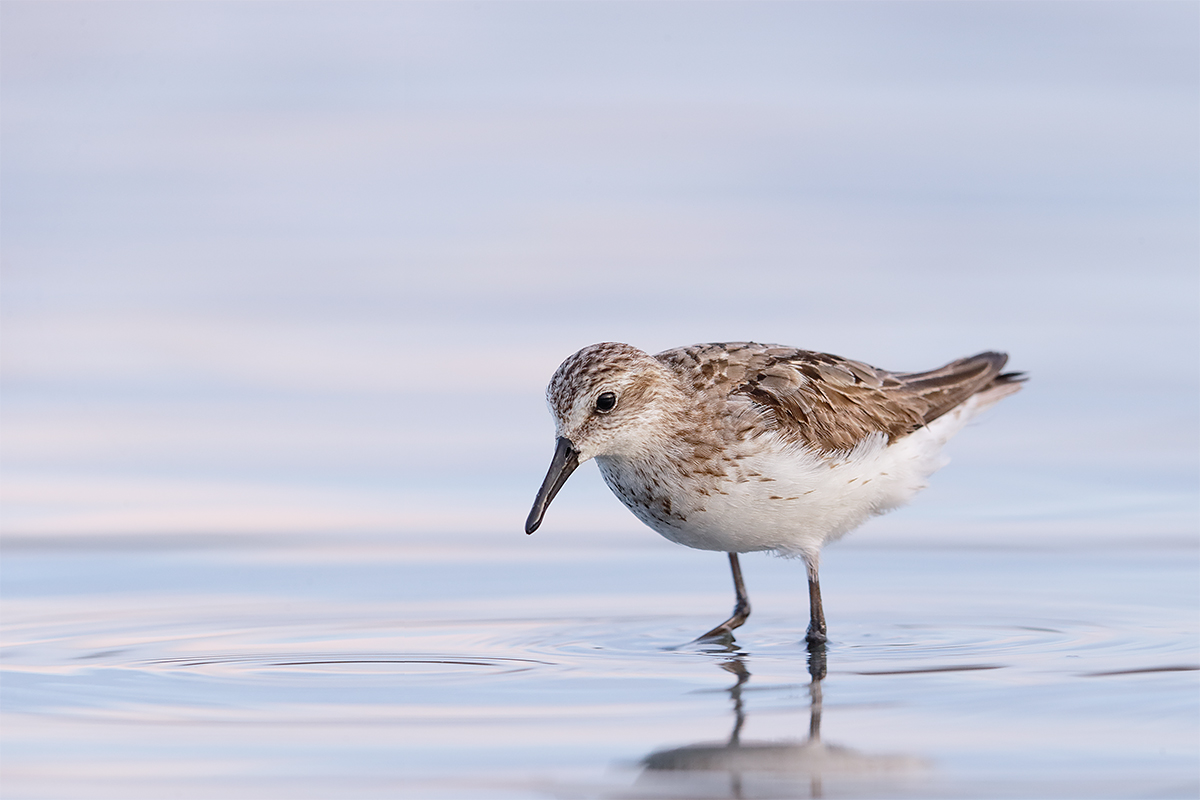
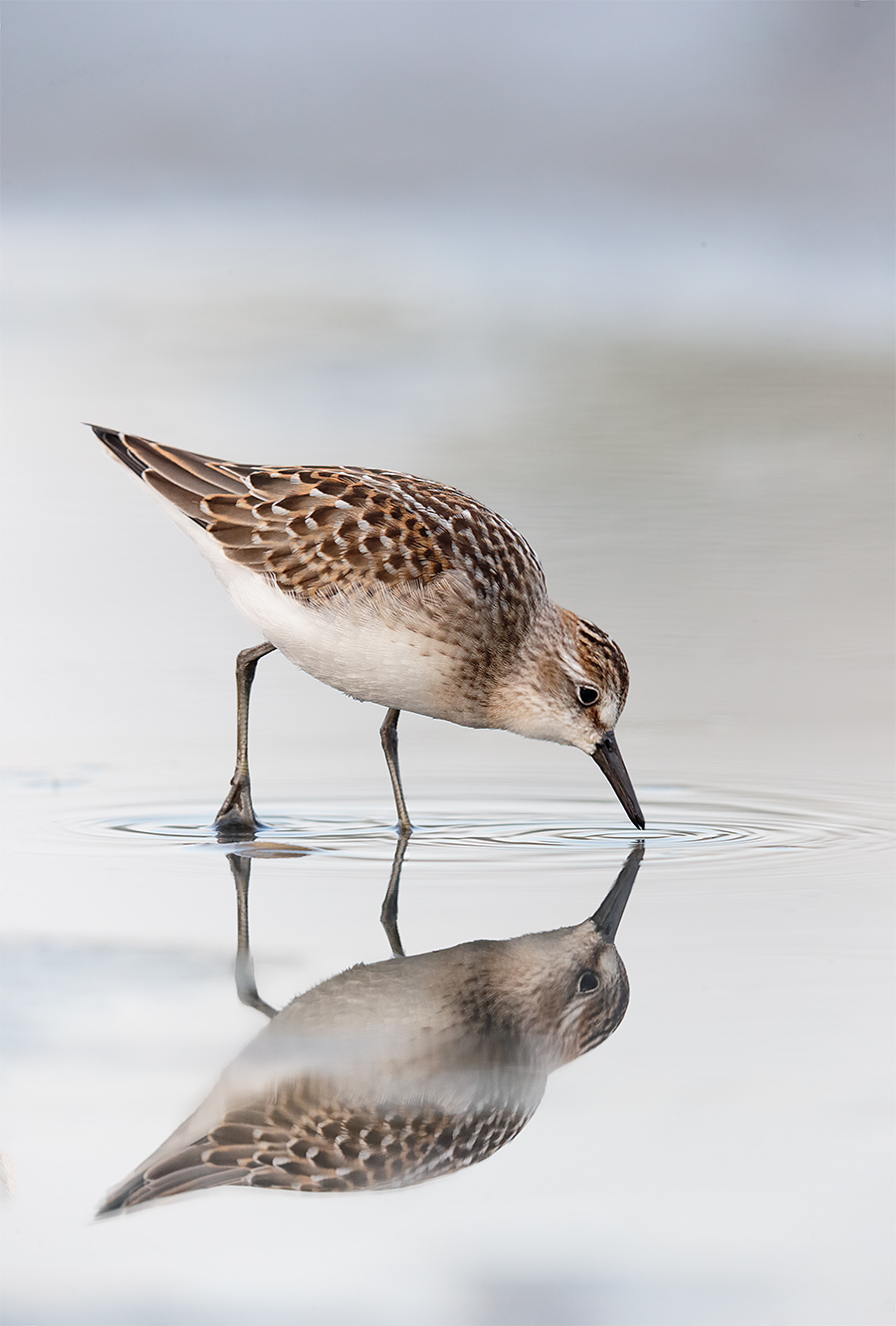
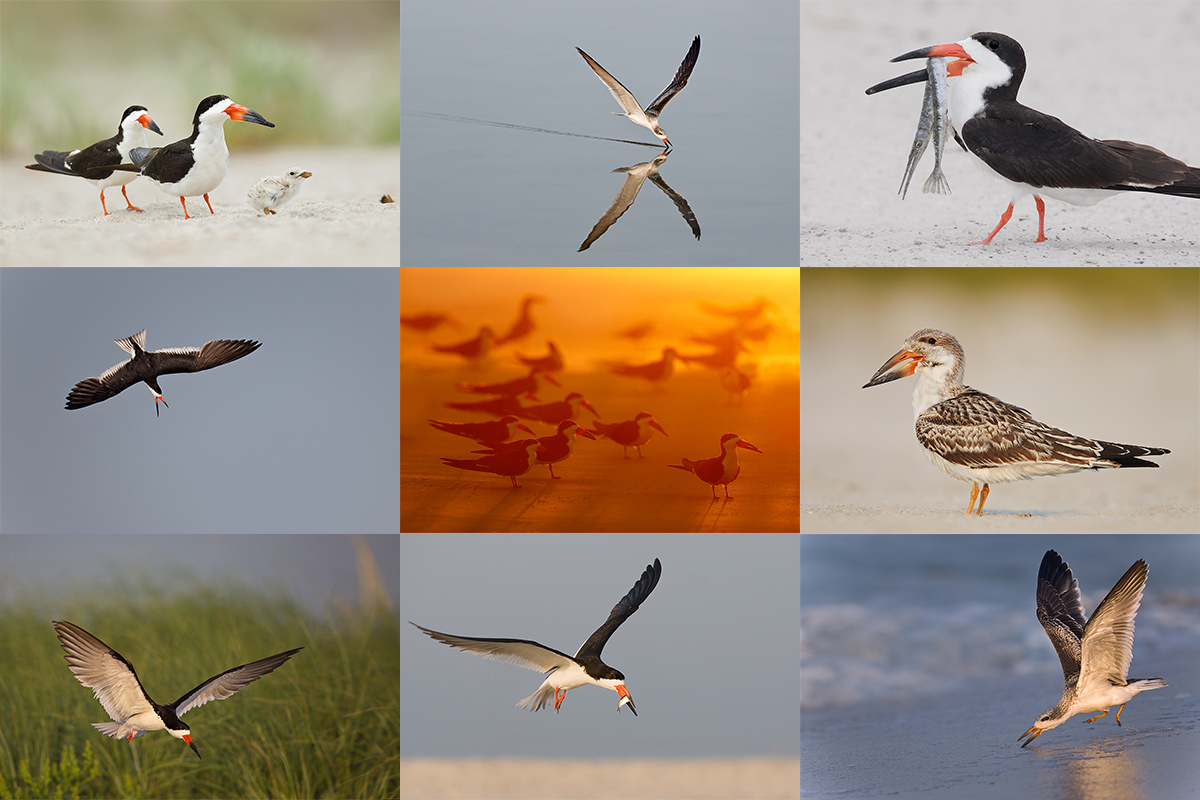
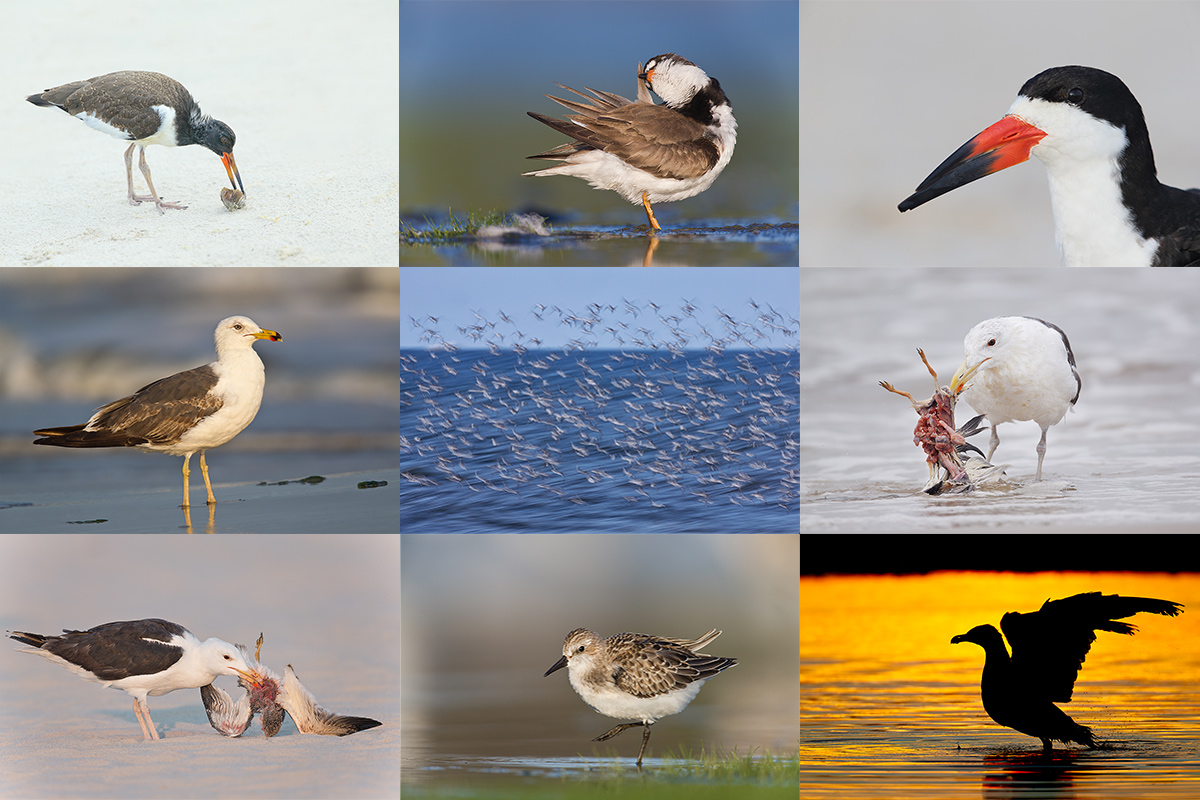
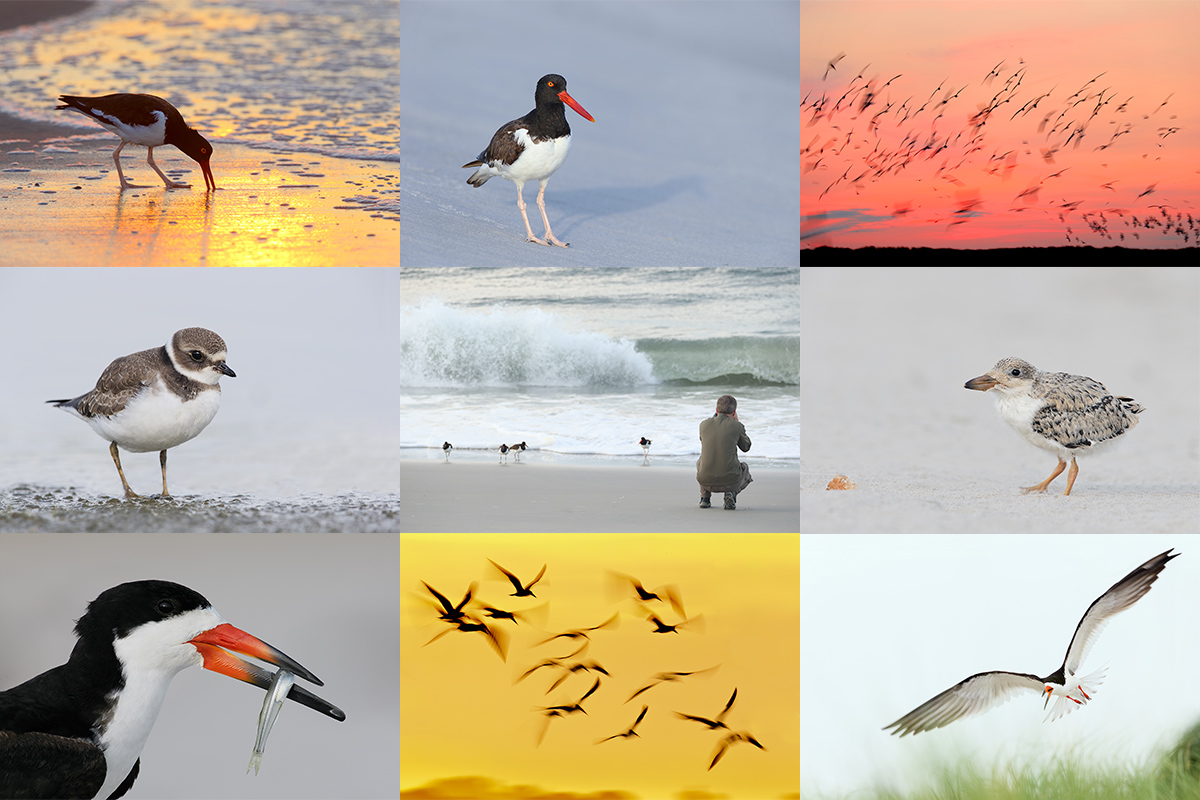













Adult semi-palmated sandpiper? Adult because of worn feathers in August. I thought possibly white-rumped on the way to non-breeding plumage. But there is no red on the lower mandible at the base of the bill. And the wings don’t look longer than the tail. Although the photo angle does scrunch the bird shape a bit.
Is it the partial reflection that you would like to avoid? If you were seated, would lying down have avoided the reflection? Or is it that the tail tip is not sharp? The line behind the bill tip doesn’t bother me.
Adult semi is correct. a
Hi, Artie. Wonderful images both. You wrote “the bird in today’s featured photograph is a juvenile semipalmated plover.” Seems to me it would be silly to disagree with the photographer, so that’s what I’ll say it is. However, the bill looks more like that of a black-bellied plover to me, and I can imagine the plumage is an adult nonbreeding of that species. It would be expected in Long Island in August, as would a juvenile semipalmated sandpiper. I’m guessing you were sitting behind the lowered tripod because of the apparent angle with the bird; low but not quite at ground level. I agree with David Peake when he says that he always feels a bit nervous suggesting a way for the world’s best bird photographer to improve his image. Nicely put, DP, from another DP. Having said that, I might consider having more of the bird’s reflection in the image as a possible improvement.
Not sure what you are looking at but I wrote, “The bird in today’s featured photograph is a juvenile Semipalmated Sandpiper.” (Sandpiper not plover….) That was perhaps somewhat confusing as it was cut and pasted from the original Shorebird Lessons post…. a
Indeed you did, Artie. I get focused on the word “semipalmated” and then forget whether it was a sandpiper or a plover. Three slaps upside the head for not paying closer attention. I still think it’s silly to disagree with the photographer, but it still looks more like a black-bellied plover to me. 🙂
If that looks like a black-bellied you need to get out to the beach a lot more 🙂 a
A juvenile, as I originally said, not an adult. But you’re absolutely right about my needing to get to the beach more, although recently I’ve been just captivated by terns on my local beaches. I’m looking forward to getting on a beach with you and Denise and others soon.
I also think you were seated, based mostly on the length of the reflection (legs) I think if you were lower, the reflection would be longer.
The background is basically good, which is why you did not get lower. However, for this image , there is a horizontal line running right at the tip of the bill/ belly height. This is a little distracting. If you were a little lower, this horizontal line would have been below the bird, and would have been fine. If this line was caused by a small wave/ripple, just waiting a second would have allowed it to move out of the way.
Just a thought! Enjoy your trip!
Yes I was seated. Lying flat would have been better and resulted in a cleaner background. a
Hi Artie,
It looks like you’re seated.( I have seen pictures of you doing this but none of you lying prone, legs splayed sniper style.)
The birds reflection and line in the background suggest you are low but not right down at water level.
Semipalmated sand piper first image is adult.
Feathers quite worn compared to the nice example of the juvenile in the second image.
Always feel a bit nervous when suggesting a way for the worlds best bird photographer to improve his image.
Perhaps your sun angle is not ideal here.
The breast is quite shaded.
I would be thrilled to have shot such a nice image so you see my dilemma. Would I click the shutter or wait for some thing better?
I would click it , every time…. In a heartbeat.
Always learn so much here.
Many thanks.
David Peake.
Since this was taken in August, worn feathers says adult. As for the specie, I think you sticked to semipalmated sandpiper, for all the reasons listed in your post (dark legs, medium bill with blob at the tip, similar wing/tail length). Bill looks too small for Western.
As for the image, I’ll try something for the fun of it, although I feel I’m being terribly wrong, or terribly picky trying to find something improvable about this image.
I think you were seated behind your tripod, because of the ripple or small wave that created a dark line in the background just below the bill and belly, and also because of the partial strong reflection of the bird below. If you had been a bit lower, the reflection would have been almost absent, and the dark line would not have shown up, being at roughly the same level as the water surface.
Correct on all counts. Well done. artie